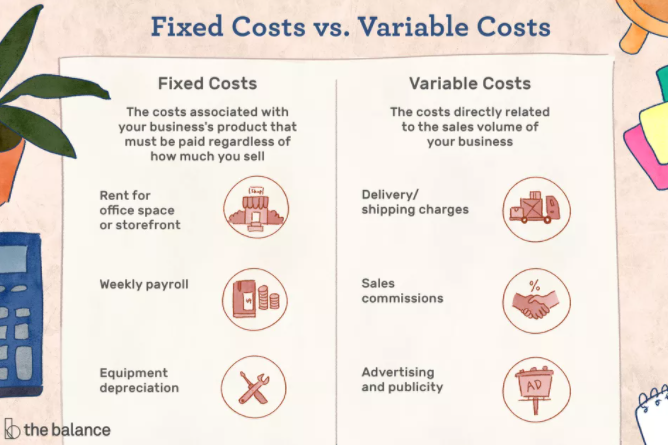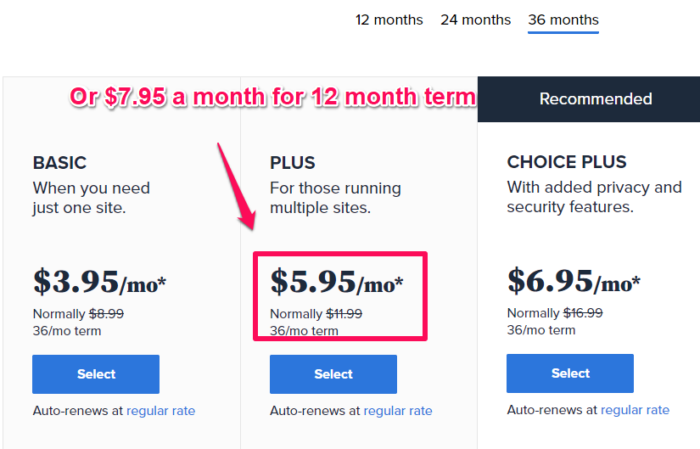
We’re well into the digital age, and e-commerce stores are more prevalent than ever. There are an estimated 12 million to 14 million online stores worldwide—and those numbers grow every day.
The popularity of online stores makes sense. With just a few hundred dollars, you can have a fully-functioning online business.
While online stores tend to have fewer expenses, e-commerce overhead can quickly add up. As a business owner, you should always be looking for ways to cut costs.
Where do you start?
Which costs can you forgo, and which do you need?
How can you ensure you’re not stunting your business’ growth?
That is what this article will cover. Let’s look at the most effective ways to reduce your online store costs.
What Are E-Commerce Overhead Costs?
Overhead is an accounting term that refers to most business-related expenses.
Investopedia explains,
Overhead refers to the ongoing business expenses not directly attributed to creating a product or service.
Many people mistake their operating expenses for overhead costs. However, these are not the same.
Here’s how to tell the difference:
Operational costs are any expenses that help you run the day-to-day operations of your business. For an e-commerce store, these include the materials you buy, labor, production, packaging, shipping, marketing, and other related costs.
On the other hand, overhead costs are ongoing expenses that you incur whether or not you’re producing or selling anything. For an e-commerce store, these include insurance, software, web hosting fees, employee and management salaries, etc.
This graphic helps break it down a bit further:

Before you can cut back on these expenses, you’ll need to divide them into different categories to understand what can be cut and what cannot.
You can divide your e-commerce overhead into three different categories:
1. Fixed Overhead Costs
As the name suggests, these costs are fixed and can’t be changed. For example, the warehouse rent you pay every month.
2. Variable Overhead Costs
This refers to expenses that differ from month to month, such as an electricity bill. The electric bill might be higher during certain times of the year (like winter or summer) and lower at other times. There is no fixed month to month payment.
3. Semi-Variable Overhead Costs
Semi-variable costs mean that a portion of the payment is fixed, while the other part may depend on your activities. For instance, your email marketing platform may have a base charge to pay every month and then another charge based on how many emails you send or how many contacts you have.
To reduce your e-commerce overhead, focus on your variable and semi-variable costs because these are the expenses that can be cut back on with a little planning and strategy.
Predicting E-Commerce Overhead Costs and Setting a Budget
It’s challenging to reduce costs when you don’t pay attention to what you spend. Unfortunately, that’s what usually happens. These expenses quickly add up without most businesses noticing.
To help you get started, you’ll need to first predict your costs.
Here’s how to get started:
1. List All Your Business’ Overhead Costs
These include the costs for rent, utilities, software, salaries, and other related expenses you incur, regardless of whether you’re producing or selling anything.
2. Divide These Into Fixed, Variable, and Semi-Variable Costs
Once you have a good understanding of all your overhead costs, it’s now time to divide them into three categories: fixed, variable, and semi-variable.
This is an essential step so you can understand what you can cut back on and what you can’t.
For instance, if you have a website for your store, you may pay a certain fixed monthly or annual web hosting fee.
On the other hand, fees such as an electric bill, depend on your business activities from month to month.
3. Understand Your Problem Areas
It’s often not significant transactions but smaller, more hidden costs that can damage your ROI.
When you understand where every cent is going, it is much easier to see what you need to address.
Look for expenses you don’t use, like software or even storage. Note areas that could be cut without impacting your budget, such as a cheaper but just as effective hosting platform.
4. Create a Budget
Creating a budget is an essential part of any business. This helps you understand every expense your business incurs and where you can cut back.
When you create your budget, divide your expenses into their different categories (fixed, variable, and semi-variable), so you can see the specific costs.
Focus on your annual e-commerce overhead expenses, rather than looking at it from a month-to-month basis, as this will help you get a clearer idea of the bigger picture.
How to Reduce E-Commerce Overhead Costs
The e-commerce space allows business owners to reach more customers, regardless of geographic location. This can result in higher profits because your customer base isn’t restricted to your city.
However, your overhead costs can slowly sap away profits—sometimes without you even noticing.
Here’s how to reduce your overhead to help you maximize profits.
1. Re-Evaluate Your Packaging
Packaging costs are easy to overlook because they’re often inexpensive compared to other expenses. Unfortunately, over time, the cost for these materials can add up quickly.
To cut down costs, package your most popular items in the perfect size packages. This will ensure you don’t waste money.
For less popular products, package them in large boxes and use the right amount of material (and not too much) to ensure your packages arrive safely, with no unnecessary additional expenses.
2. Freight Fees
Most online sellers source products from various countries around the world.
The following are some factors that can affect how much you spend on transporting your goods:
- whether you choose to use air freight or ship your products
- how heavy your packaging is
- the dimensions of the packaging
- where you’re transporting your goods from
- getting your supplier or a third party to label the goods
- customs
Generally speaking, shipping your products will be a lot cheaper than air freight.
Aim for bulk orders, rather than ordering in small quantities. This can help you save on supplier and transportation costs.
3. Pay More Attention to Your Current Customers
Studies show that it’s cheaper to retain a customer than to acquire a new one.
For a potential new customer, you’ll incur costs for lead generation as you try to show them how amazing your product or service is–but your current customers already know this because they’ve bought from you before.
While it’s essential to continue growing your brand and acquire new customers, make sure to focus more on your existing customers to help reduce costs.
You can send coupons, offer discounts, and regularly keep in contact through weekly or monthly email newsletters.
You can also keep in touch through your company blog and use social media channels to build a connection.
4. Focus on Your Top-Tier Products
It costs a lot to ship and store your products at a warehouse. One way to cut down on this cost is to reduce the number of products you offer.
At first glance, this might not make sense—surely, the more products and variety you offer, the better?
The reality is, not every product will be popular with your customers. Some products will naturally perform better than others.
Instead of shipping and storing everything (and incurring costs for products your customers don’t particularly like), pay attention to your popular products.
What do your customers love? What flies off the shelves and what takes forever to sell?
There’s no use in keeping a product in a warehouse if it’s going to take months to sell.
Instead, focus on the products that are already doing well, and cut down on those that aren’t. This may also give you more budget to test new products.
Understanding these numbers will also help you plan better for your future orders.
You’ll get a clearer understanding of which products you’ll need to order in bulk and which you don’t need at all.
5. Take Advantage of Every Discount
Nearly every bill you have likely offers a discount of some kind. These discounts can be seasonal or available throughout the year.
For example, Bluehost charges $7.95 a month for a 12-month hosting plan, but just $5.95 a month for a 36-month plan.

Pay attention to the discounts available and use them to help you save on your overhead costs. For an online store, these discounts can include:
- web hosting fees (annual vs. monthly)
- bulk orders from suppliers
- seasonal and/or holiday discounts
- clearance discounts
- co-advertising credits
- discounts for paying suppliers early
These discounts might seem small, but they can drastically reduce your e-commerce overhead costs.
Top Benefits of Focusing on Overhead Cost Reduction
There are many reasons why focusing on reducing your overhead costs makes sense. These are just a couple:
1. Greater ROI
The reality is, people go into business to make money. As we highlighted earlier, your variable and semi-variable costs can quickly add up, and this will naturally affect your profits.
Paying attention to your overhead helps you see where you’re wasting money so you can improve profits and ROI.
2. Transfer Gains Into Other Areas
Standing out in the e-commerce space has become increasingly challenging, especially over the past few years.
While e-commerce offers great benefits, such as having the opportunity to connect and engage with your market online, competition has also increased, even within niche markets.
To drive sales and continue to grow your business, you need to invest capital in marketing so you can get your audience’s attention in the crowded virtual world.
Of course, online marketing can be costly.
If you reduce your e-commerce overhead, you may have extra money to channel into your online marketing, which will ultimately help your business grow.
Tracking Overhead Costs
After following the above steps, you’ll be able to reduce key overhead costs.
At first glance, the reduction might not seem much. You might even start to question the whole point of reducing your e-commerce overhead.
Keep in mind that reducing overhead costs makes a difference in the long run.
While you might not see that much of a difference in the first couple of months, as you look at your accounting books at the end of the year, you’ll likely see significant gains.
To help you get a clearer picture of your e-commerce overhead and how much you managed to save, you’ll need to track the following critical KPIs:
- gross profit
- average margins
- inventory levels
- overall labor effectiveness
- ROI
- cost variance
Conclusion
Running an online business allows you to connect with your audience and build a successful platform from anywhere in the world.
However, out of control overhead costs can make it difficult to reap these benefits.
Understanding your overhead costs can improve your profits and help you better serve your customers.
What does it really cost to keep your business operational? Focus on areas where you can cut back that will make a significant difference in your profits.
Are you running an e-commerce business? What are some ways you’re keeping your overhead costs to a minimum?
The post How to Reduce E-Commerce Overhead appeared first on Neil Patel.
via https://AiUpNow.com February 4, 2021 at 05:00PM by Neil Patel, Khareem Sudlow,
